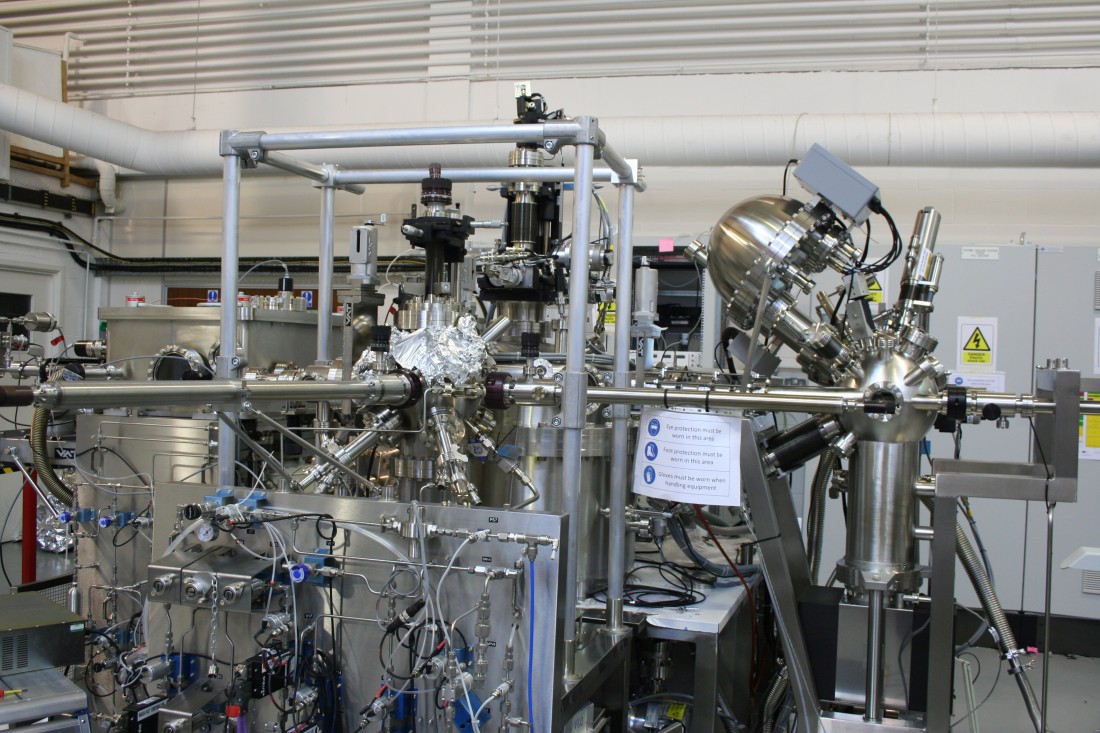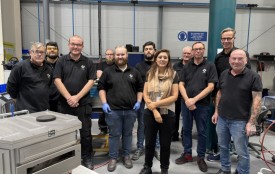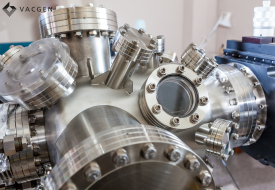Introduction
Photoemission spectroscopy is a powerful experimental technique used to study the elemental and electronic structure of materials in various states such as solids, liquids and gases. The application covers a wide range of scientific fields, with the main focus on surface chemistry and materials science. The most common forms of photoemission spectroscopy (PES) are X-ray photoelectron spectroscopy (XPS), Ultra-Violet photoelectron spectroscopy (UPS) and Angle Resolved photoelectron spectroscopy (ARPES). Let’s explore some of the fundamental aspects of this powerful tool.
The Basic Principle
Photoemission spectroscopy (PES) is a surface sensitive technique used for determining the elemental and chemical composition of a sample. In photoemission spectroscopy, high-energy photons, usually X-rays (for XPS) or ultraviolet light (for UPS), are used to excite electrons in the sample and cause them to be emitted. The photons are absorbed by the sample, causing an emission of electrons. The kinetic energy of the emitted electrons are measured by the electron spectrometer. A PES measurement yields a spectrum of the number of emitted electrons as a function of energy (binding or kinetic). The spectrum gives an elemental fingerprint of the surface chemical composition, since each element has a characteristic set of core electron binding energies. PES also detects the chemical states of the elements, as chemical bonding influences the binding energy.
Elemental & Chemical State Identification
The core levels in a photoelectron spectrum appear at certain binding energies which are specific for each element. PES can therefore be used for a qualitative analysis of a sample. The method is also site-sensitive since the detailed positions of the core levels depend on the chemical state of the probed atoms. Different chemical bonds affect the binding energies, creating so-called chemical shifts. The chemical shift can result from a change in the nearest neighbour, the oxidation state, the compound, or the crystal structure. It is also possible to distinguish between surface and bulk atoms.
Quantitative Analysis
The surface concentration of an element is proportional to the measures line intensity. However, a quantitative analysis is not straight forward, since the intensity depends on other factors, such as the differential cross section of the electron orbital, the photon energy and polarisation. These factors also have to be taken into account when performing a quantitative analysis.
Surface Sensitivity
Due to the short escape of electrons in matter, PES is a surface sensitive technique. However, some of the bulk is also observed since the probing depth is typically 5-25 Å. The relation between surface and bulk is altered by changing the kinetic energy of the electron or the incidence angle of the light. By using a grazing angle almost only the surface atoms are probed. This can be utilised to make the depth profile of a sample.
Instrumentation
Electron spectrometers consist of an electron lens, a hemispherical electron energy analyser, a detection system, high voltage electronics and control software.
The electron analyser is used to determine the kinetic energy from the ejected electrons, while the detector records the number of electrons at each energy level. The entire process happens under ultra-high vacuum conditions, where the sample is placed in a vacuum chamber to prevent interference from air molecules.
Chambers are often fabricated from mu-metal. Mu-metal is a type of magnetic shielding material that is often used in electron spectroscopy chambers to minimise external magnetic interference. Electron spectroscopy techniques, such as X-ray photoelectron spectroscopy (XPS) or Auger electron spectroscopy (AES), are highly sensitive to magnetic fields. External magnetic fields can distort the trajectories of electrons, leading to inaccuracies in the measurements and affecting the overall performance of the spectroscopy system.
Summary
Understanding the fundamentals of photoemission spectroscopy is essential for utilising it effectively in materials science, surface science, and related fields. Researchers often use a combination of XPS and UPS to gain comprehensive insights into the electronic properties of materials.
VACGEN have a rich history in manufacturing instrumentation for surface science applications including XPS and ARPES vacuum components and chambers. If you are part of an academic research team, then why not get in touch or view our capabilities for one off chamber and instrument builds. Alternatively, if you are an OEM instrument manufacturer and you want a build to print volume production service for analytic instruments, please get in touch here. Our capabilities include vacuum chamber technology, linear and rotary drives, sample manipulators for surface science and deposition, leak valves and more.








